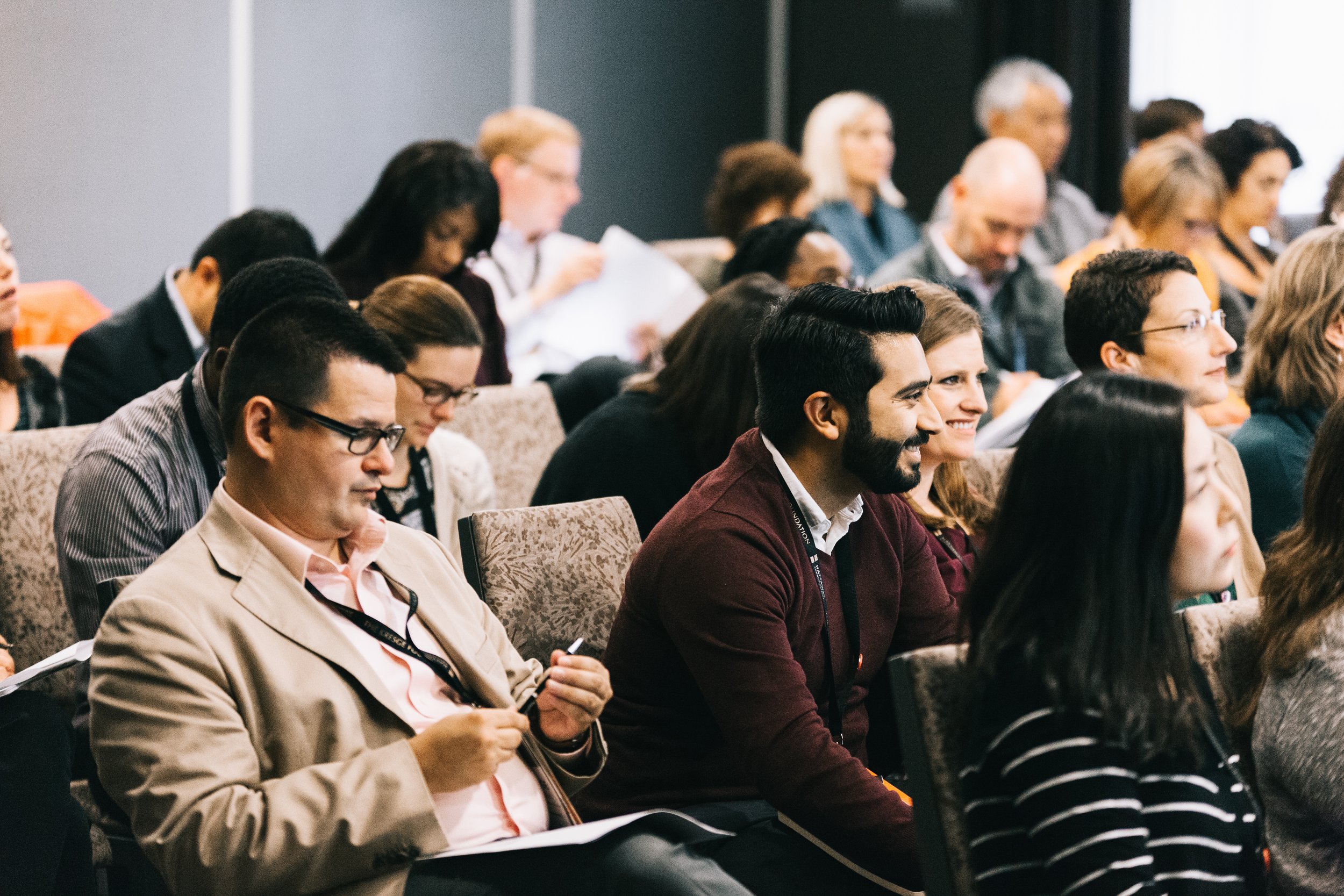
Language Matters
Glossary of terms
Equity
An equity emphasis seeks to render justice by deeply considering structural factors that benefit some social groups/communities and harms other social groups/communities. Sometimes justice demands, for the purpose of equity, an unequal response.
Diversity
Diversity includes all the ways in which people differ, and it encompasses all the different characteristics that make one individual or group different from another. It is all-inclusive and recognizes everyone and every group as part of the diversity that should be valued.
Inclusion
Inclusion is the action or state of including or of being included within a group or structure. More than simply diversity and numerical representation, inclusion involves authentic and empowered participation and a true sense of belonging.

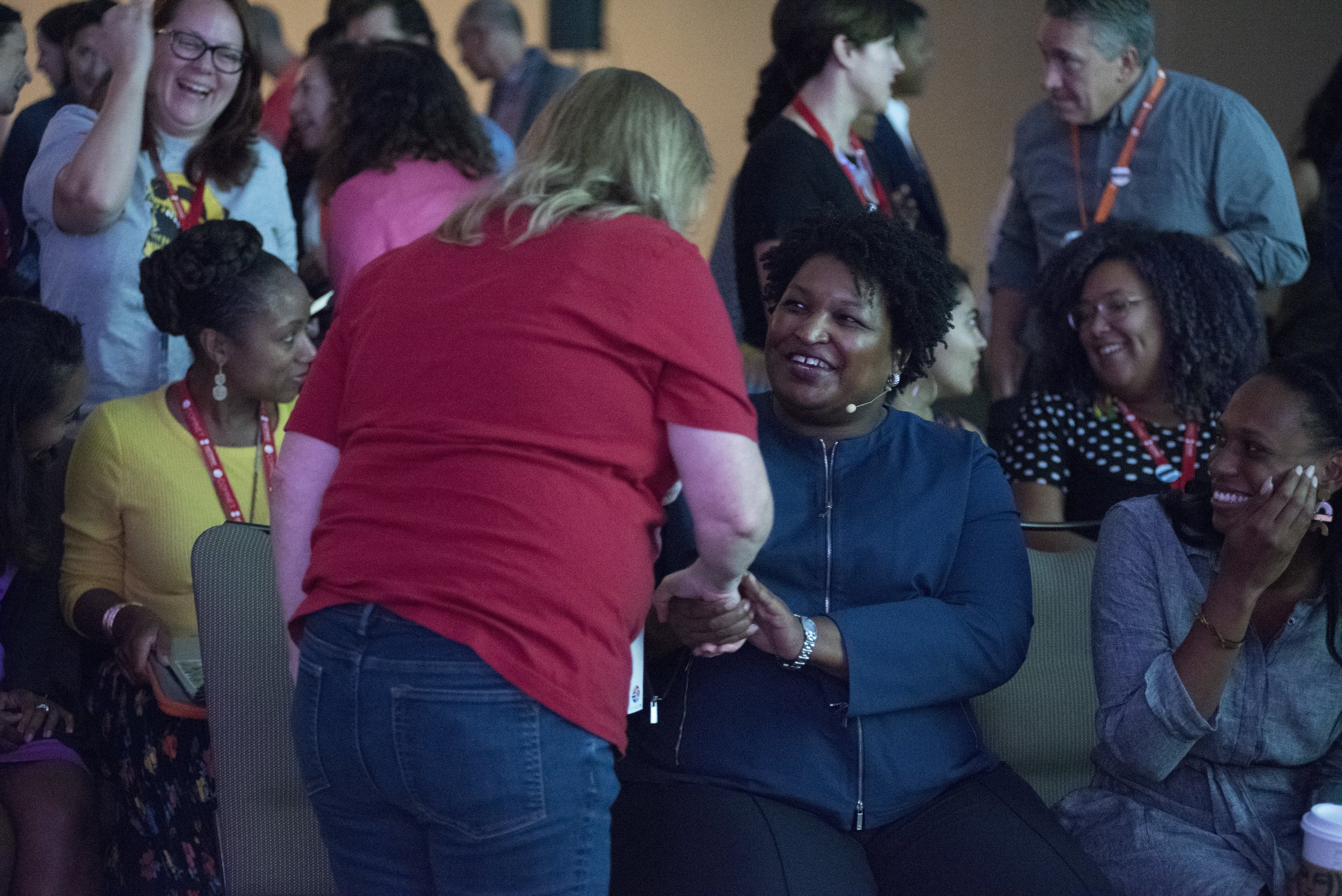
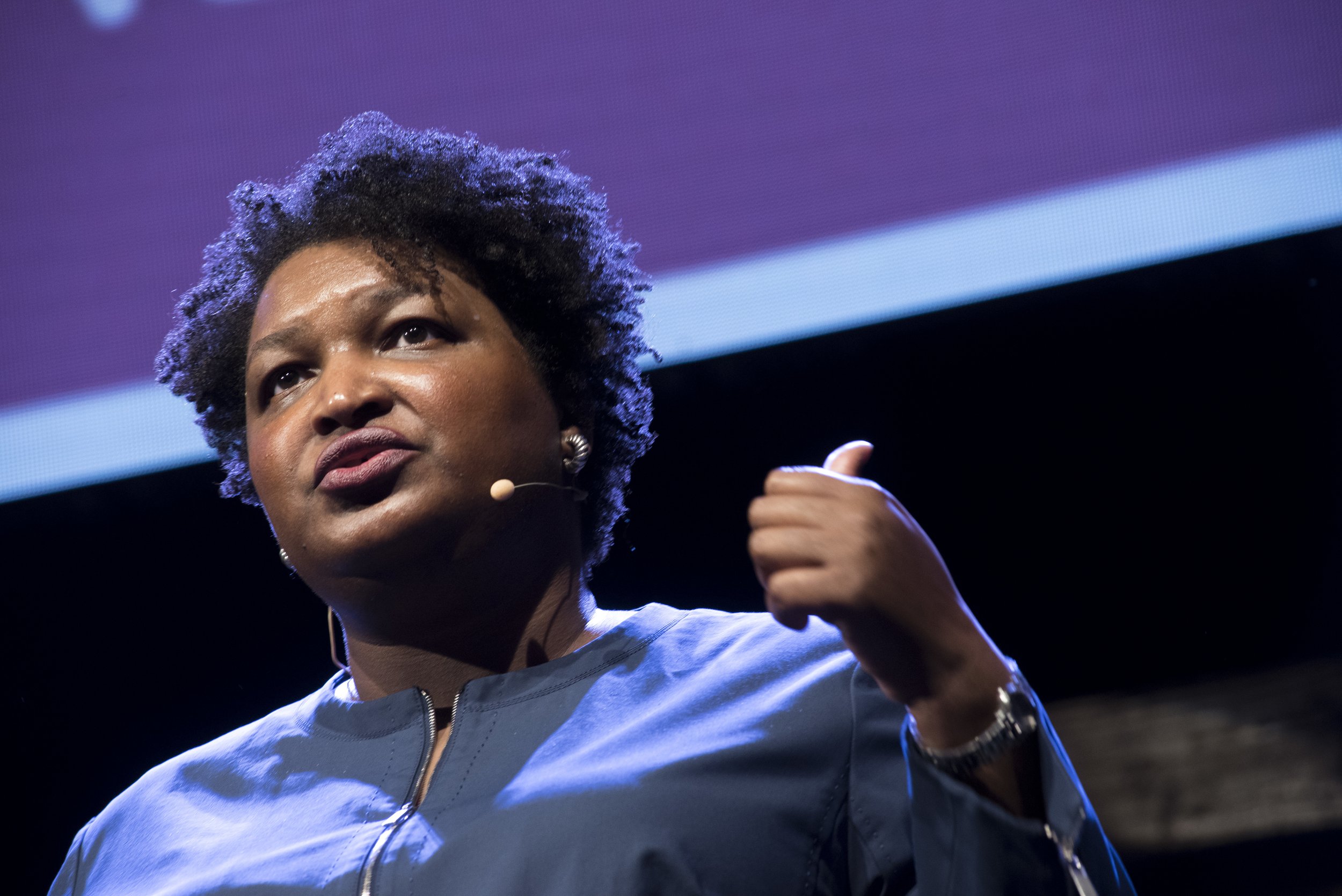

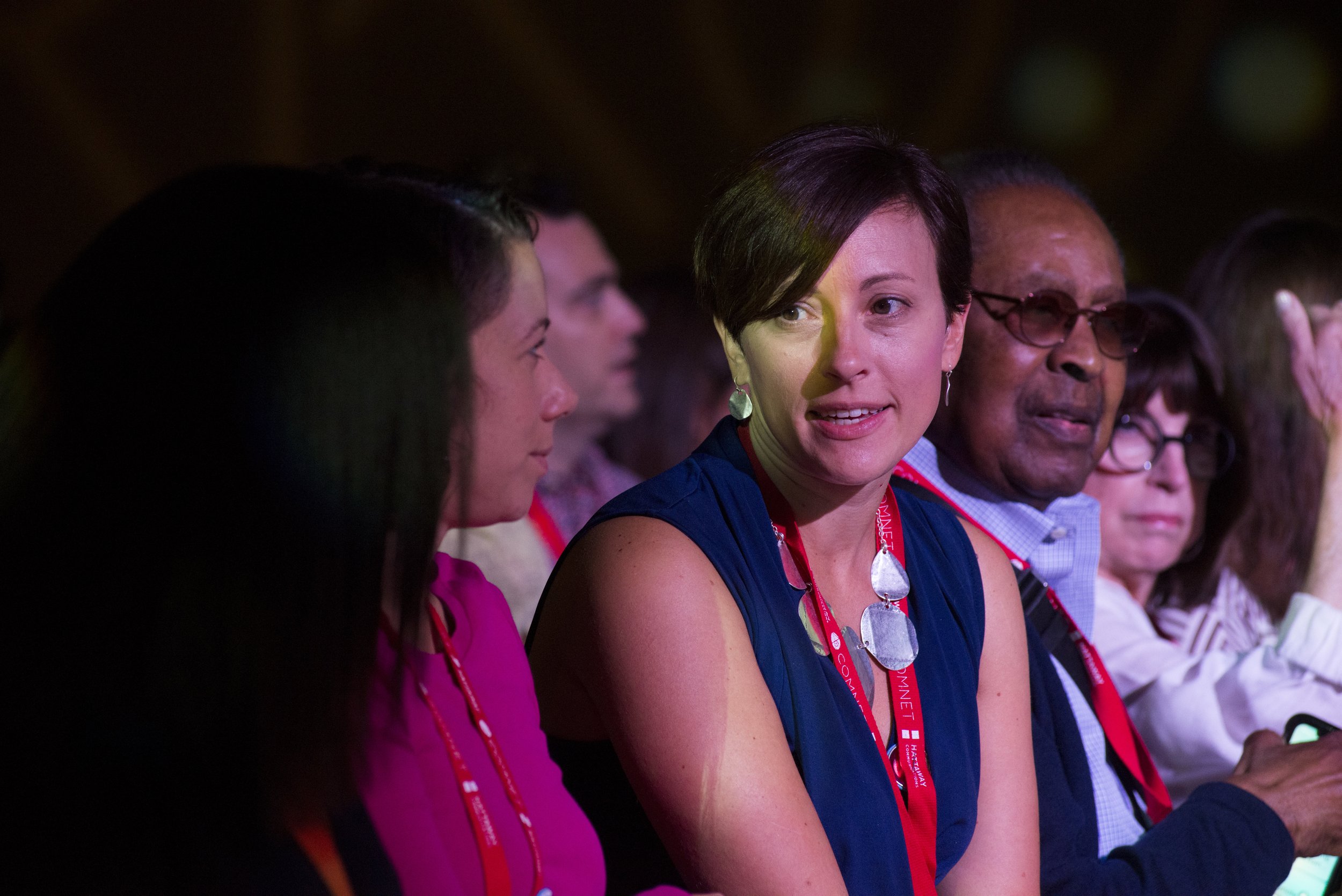
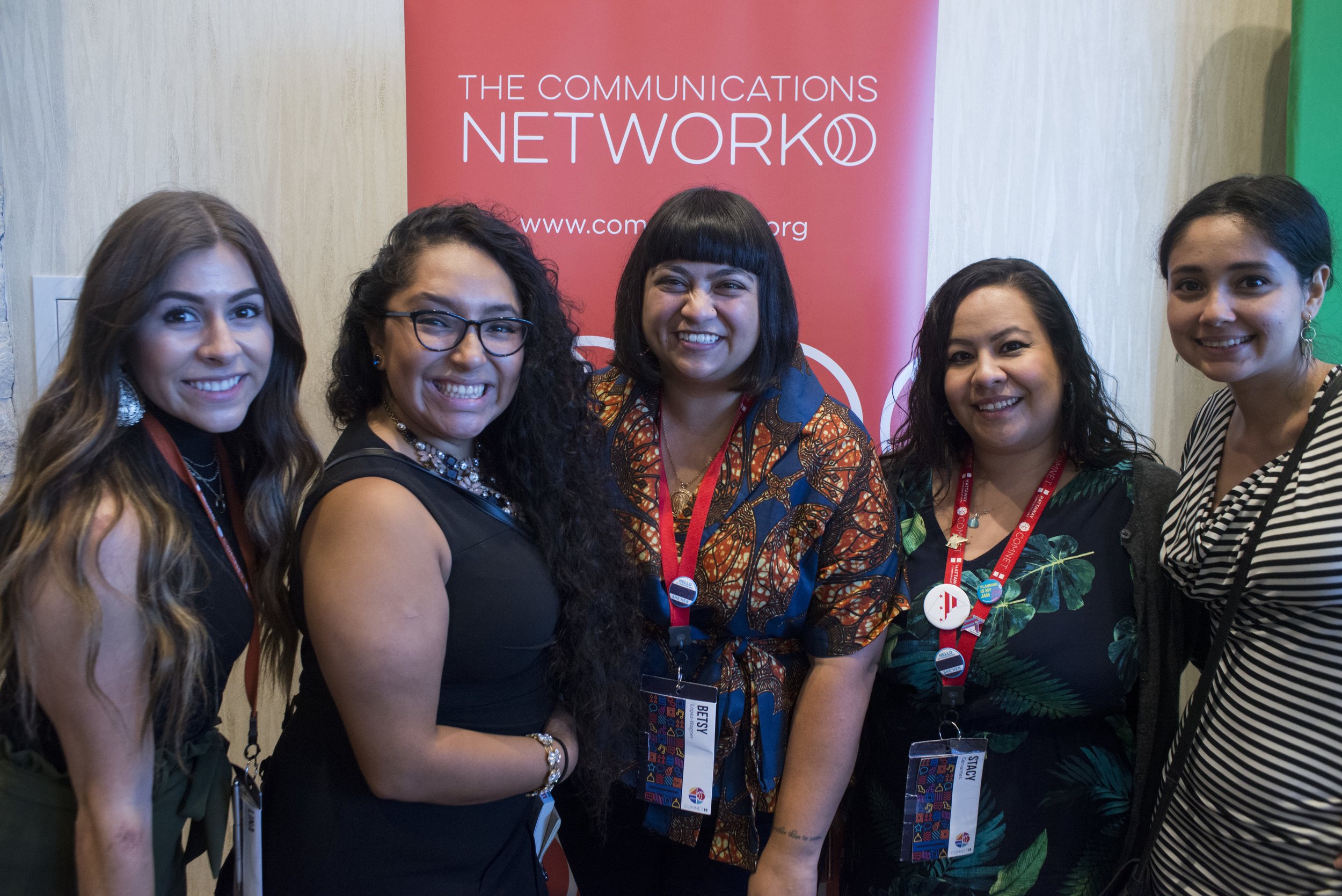
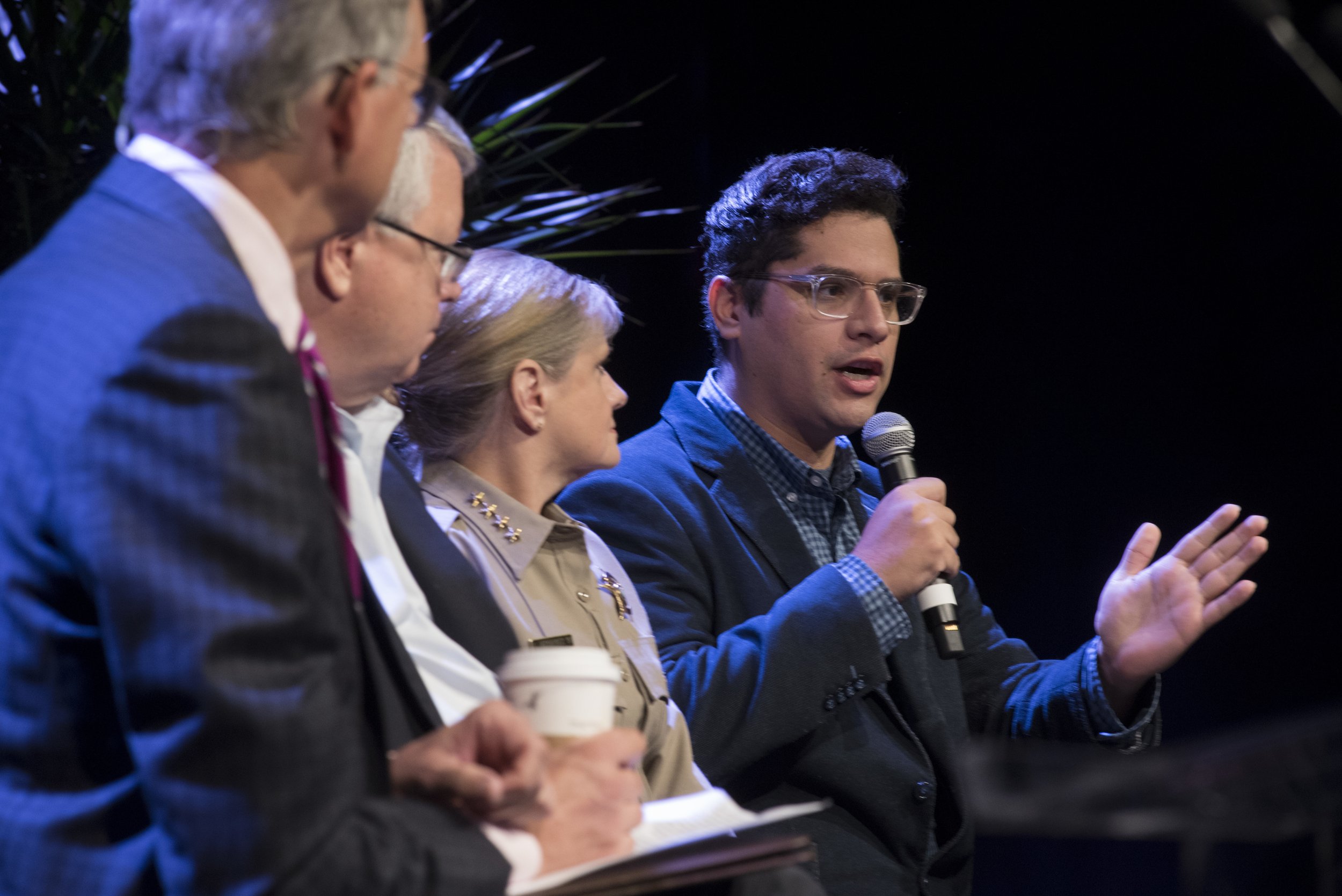
Definitions of Race & Ethnicity
The concept of race is a man-made construct with no biological foundation. The idea of ethnicity is also man-made, and is based on a common set of beliefs, traditions, and customs. From the day we’re born, the terms used to describe our skin shade and ethnic customs are constructed by society. These terms and who is included in the category have evolved over time. On top of that, the way in which we describe different races varies from country to country and even from region to region. Because there isn’t universal agreement on race or ethnic descriptors, it is extremely important to know the difference between terms, especially when your organization is deciding which lexicon to use. Let’s explore the terms that are frequently used in the United States.
African American
Refers to Americans who are from or descendants of Africa. This term is widely used in the United States both in formal and informal settings. More recently, some argue that this title is a way of othering people with dark skin as African Americans rather than acknowledging them as just, American.
Black
Used to describe someone having dark pigmentation of the skin from various regions including Africa, the Caribbean, South America, or other regions. More recently this term is used in formal and informal settings and is considered a more inclusive term because it encompasses the African diaspora.
Latino
Refers to people who are from or descendants of people from Latin America. Latino people may or may not speak Spanish, as many Latin Countries predominantly speak Portugues or French. This term is most often used to describe a male, a group of males, or a group of people of both genders (Latinos). The female version of the term is Latina(s).
Latinx
A gender-neutral and pan-ethnic term that refers to people who are from or descendants of people from Latin America. The use of this term is under debate. While some like the term because it is inclusive of both genders, others feel that the term was imposed on Latinos and does not follow traditional Spanish grammar and therefore oppose its use.
Native Peoples/ Indigenous Peoples
The term refers to the earliest people of a given area. The term applies globally but in the United States, it refers to American Indians. This term recognizes that native populations are not a monolithic group and are represented by numerous independent tribes, nations, and ethnicities. Therefore this term is often used in a plural format.
Hispanic
Refers to people who are descendants of Spanish-speaking countries in Latin America and Spain. There can be an overlap between Hispanic and Latino and according to the US Census Bureau, a person is Hispanic if they consider themselves Hispanic. For example, a person of Mexican descent is both Hispanic and Latino, however a person from Brazilian decent is only Latino because it is a Portuguese-speaking country.
Asian
Refers to people who are from or descendants of people from countries in Asia. While the U.S. census categorizes most Asians together, there are vast differences between the regions and ethnicities that constitute Asia. Even within the major subcategories of Asians (East Asian, South Asian, Southeast Asian, Central Asian, Hawaii and Pacific Islander, and Middle Eastern) there is incredible diversity in language and culture.
Native American/Indigenous American/American Indian
Refers to indigenous people of the Americas including the United States of America. While all of these terms are generally acceptable, the word American Indian and Indigenous American is becoming more preferred by Native people and the term Native American is less preferred. When possible, the preference is always to refer to the specific tribal name. These terms are not to be confused with Indian Americans which refers to descendants from the country of India.
White
Used to describe someone having light pigmentation of the skin from various regions of European and (more technically) Western Eurasian descent. In the United States, there has been an evolution over time of who is considered white.
Caucasian
The term has a long history stemming from a scientific term referring to a group of people with similar skeletal anatomy and diverse skin tones. Over the years, it was adopted in the United States to refer to people with light pigmentation of the skin most often from regions of Europe but technically does include people with light pigmentation of the skin from the Middle East and North Africa. It is often considered synonymous with white.
BIPOC
An acronym meaning ‘Black, Indigenous, or Person of color’. This is a modern term that recognizes the historical and modern injustices experienced specifically by Black and Indigenous people in the United States. It avoids making the experiences of all people of color a monolith. While people of color generally experience discrimination, the experiences of Black people and of Indigenous people is unique and steeped in a long history of racism.
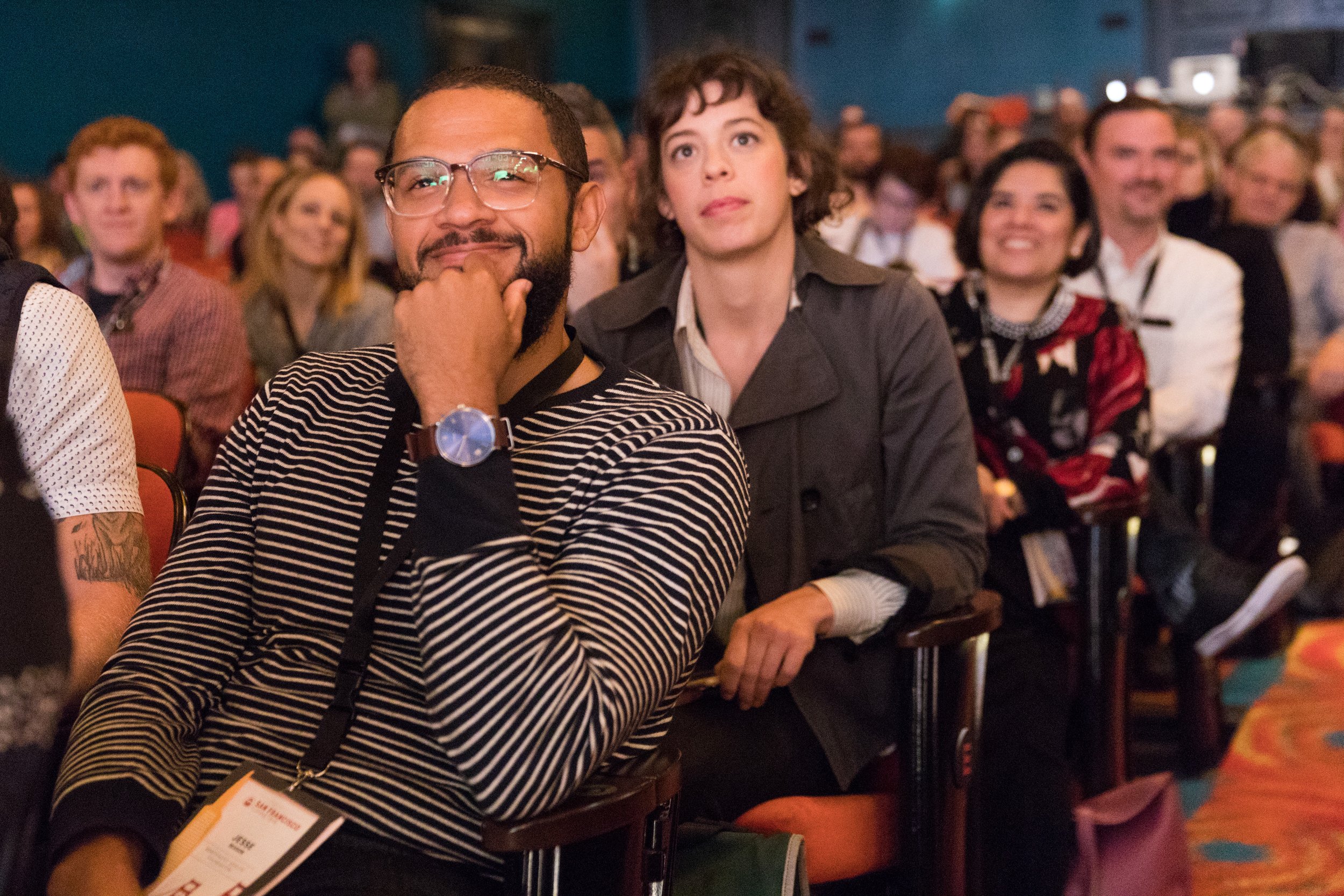
DEI Glossary
A
Discrimination against people with mental and/or physical disabilities; social structures that favor the able-bodied.
See also Disability
Source: Glossary Of Diversity, Equity, and Inclusion Terms, Seramount.com
Discrimination against individuals because of their age. Commonly based on stereotypes.
Source: Glossary Of Diversity, Equity, and Inclusion Terms, Seramount.com
Someone who supports a group other than one's own (in terms of racial identity, gender, faith identity, sexual orientation, etc.). Allies acknowledge disadvantage and oppression of other groups than their own; take risks and supportive action on their behalf; commit to reducing their own complicity or collusion in oppression of those groups and invest in strengthening their own knowledge and awareness of oppression.
See also Allyship
An active, consistent, and arduous practice of unlearning and re-evaluating, in which a person in a position of privilege and power seeks to operate in solidarity with a marginalized group.
Allyship is not an identity—it is a lifelong process of building relationships based on trust, consistency, and accountability with marginalized individuals and/or groups of people.
Allyship is not self-defined—our work and our efforts must be recognized by the people we seek to ally ourselves with
It is important to be intentional in how the work is framed i.e. we are showing support for…, we are showing our commitment to ending [a system of oppression] by…, we are using our privilege to help by…
See also Ally
Source: The Anti-Oppression Network
B
Prejudice in favor of or against one thing, person, or group compared with another, usually in an unfair or negative way.
See also Implicit Bias and Explicit Bias
Source: Glossary of Diversity, Inclusion and Belonging (DIB) Terms, Harvard
Bigotry
Intolerant prejudice which glorifies one's own group and denigrates members of other groups.
Source: Racial Equity Resource Guide, Kellogg Foundation
Bilpoc (Black, Indigenous, Latinx, People of Color)
The term “BILPOC” (pronounced “bill-pock”) is used as a tool to center how Black, Indigenous, Latinx and/or any People of Color have experienced structural racism, cultural erasure, and discrimination in our region.
Used to describe a person who identifies as being of two races, or whose parents are from two different races.
Source: Inclusive language glossary - Diversity, equity, and inclusion, firstup.io
C
Cisgender (CIS)
Someone who identifies with the gender that they were assigned at birth.
Source: LGBTQIA+ Basic Terms and Definitions, sdstate.edu
Collusion
When people act to perpetuate oppression or prevent others from working to eliminate oppression.
Example: Able-bodied people who object to strategies for making buildings accessible because of the expense.
Source: Racial Equity Tools Glossary, racialequitytools.org
Colorism
Using white skin color as the standard, colorism is the allocation of privilege and favor to lighter skin colors and disadvantage to darker skin colors. Colorism operates both within and across racial and ethnic groups.
Source: Racial Equity Tools Glossary, racialequitytools.org
Critical Race Theory (CRT)
Critical race theory (CRT) is a way of thinking about America’s history through the lens of racism. It examines how the legacy of slavery and segregation in the US is embedded in modern-day legal systems and policies.
The Critical Race Theory movement considers many of the same issues that conventional civil rights and ethnic studies take up, but places them in a broader perspective that includes economics, history, and even feelings and the unconscious. Unlike traditional civil rights, which embraces incrementalism and step by step progress, critical race theory questions the very foundations of the liberal order, including equality theory, legal reasoning, Enlightenment rationalism, and principles of constitutional law.
Source: World Economic Forum
Source: Racial Equity Tools Glossary, racialequitytools.org
Cultural Appropriation
Theft of cultural elements—including symbols, art, language, customs, etc.—for one’s own use, commodification, or profit, often without understanding, acknowledgement, or respect for its value in the original culture. Results from the assumption of a dominant (i.e. white) culture’s right to take other cultural elements.
Source: Racial Equity Tools Glossary, racialequitytools.org
Cultural Racism
Cultural racism refers to representations, messages and stories conveying the idea that behaviors and values associated with white people or “whiteness” are automatically “better” or more “normal” than those associated with other racially defined groups.
Cultural racism shows up in advertising, movies, history books, definitions of patriotism, and in policies and laws. Cultural racism is also a powerful force in maintaining systems of internalized supremacy and internalized racism. It does that by influencing collective beliefs about what constitutes appropriate behavior, what is seen as beautiful, and the value placed on various forms of expression. All of these cultural norms and values in the U.S. have explicitly or implicitly racialized ideals and assumptions (for example, what “nude” means as a color, which facial features and body types are considered beautiful, which child-rearing practices are considered appropriate.)
Source: Racial Equity Tools Glossary, racialequitytools.org
Culture
A social system of meaning and custom that is developed by a group of people to assure its adaptation and survival. These groups are distinguished by a set of unspoken rules that shape values, beliefs, habits, patterns of thinking, behaviors and styles of communication.
Source: Racial Equity Resource Guide, Kellogg Foundation
Cultural Pluralism
Recognition of the contribution of each group to a common civilization. It encourages the maintenance and development of different life styles, languages and convictions. It is a commitment to deal cooperatively with common concerns. It strives to create the conditions of harmony and respect within a culturally diverse society.
D
The term is used to describe individuals with mental or physical impairment which has an effect on their ability to carry out daily activities. “Person with a Disability” is a more inclusive term to use, rather than “Disabled Person”.
See also Ableism
Source: Inclusive language glossary - Diversity, equity, and inclusion, firstup.io
Discrimination
The unequal treatment of members of various groups based on race, gender, social class, sexual orientation, physical ability, religion and other categories.
Source: Racial Equity Resource Guide, Kellogg Foundation
Diversity
Diversity includes all the ways in which people differ, and it encompasses all the different characteristics that make one individual or group different from another. It is all-inclusive and recognizes everyone and every group as part of the diversity that should be valued. A broad definition includes not only race, ethnicity, and gender — the groups that most often come to mind when the term "diversity" is used — but also age, national origin, religion, disability, sexual orientation, socioeconomic status, education, marital status, language, and physical appearance. It also involves different ideas, perspectives, and values.
Source: Racial Equity Tools
E
Ethnicity
Ethnicity refers to the social characteristics that people may have in common, such as language, religion, regional background, culture, foods, etc. Ethnicity is revealed by the traditions one follows, a person’s native language, and so on. Race, on the other hand, describes categories assigned to demographic groups based mostly on observable physical characteristics, like skin color, hair texture and eye shape.
To treat everyone exactly the same. An equality emphasis often ignores historical and structural factors that benefit some social groups/ communities and harms other social groups/communities. Often as a response to racism, people will claim a “colorblind” orientation or seek to create “colorblind” policies that will treat all people equally. However, “colorblindness” often leads to inequity because it does not acknowledge the historical and contemporary systemic forces of oppression that do not allow all of us to be our full selves equally.
An equity emphasis seeks to render justice by deeply considering structural factors that benefit some social groups/communities and harms other social groups/communities. Sometimes justice demands, for the purpose of equity, an unequal response.
See also Equality, Racial Equity, and Systematic Equity
Refers to the attitudes and beliefs we have about a person or group on a conscious level. Much of the time, these biases and their expression arise as the direct result of a perceived threat.
G
Gender Fluid
A person who does not identify with a single fixed gender; of or relating to a person having or expressing a fluid or unfixed gender identity.
Source: Equity, Diversity, & Inclusion Glossary of Terms, pacificu.edu
The internal perception of one’s gender, and how they label themselves, based on how much they align or don’t align with what they understand their options for gender to be. Common identity labels include man, woman, genderqueer, trans and more. Gender identity is sometimes confused with biological sex, or sex assigned at birth.
See also Pronouns, LGBTQIA+, Sexual Identity, and Heterosexism
H
Hate Crime
Criminal acts, motivated by bias, that target victims based on their perceived membership in a certain social group. Incidents may involve physical assault, damage to property, bullying, harassment, verbal abuse, offensive graffiti, letters or email. Hate crime laws enhance the penalties associated with conduct that is already criminal under other laws.
Source: Racial Justice in Education: Key Terms and Definitions, nea.org
The presumption that heterosexuality is superior to all other sexual orientations. The oppression, discrimination, and bias against people who are not heterosexual.
See also Pronouns, LGBTQIA+, Gender Identity, and Sexual Identity
I
Attitudes and stereotypes that influence judgment, decision-making, and behavior in ways that are outside of conscious awareness and/or control
Source: Implicit Vs. Explicit Bias: Differences, Effects And Steps to Tackle These Biases
Inclusion
Inclusion is the action or state of including or of being included within a group or structure. More than simply diversity and numerical representation, inclusion involves authentic and empowered participation and a true sense of belonging.
Source: Race, Equity, and Inclusion Action Guide, Annie E Casey Foundation
The beliefs, attitudes and actions of individuals that support or perpetuate racism. Individual racism can occur at both a conscious and unconscious level and can include face-to-face or covert actions toward a person that intentionally express prejudice, hate or bias based on race. Examples include telling a racist joke, using a racial epithet or believing in the inherent superiority of whites.
See also Racism, Institutional Racism, Internalized Racism, and Structural Racism
1. Power to create and shape the rules, policies and actions of an institution.
2. To have institutional power is to be a decision maker or to have great influence upon a decision maker of an institution.
Example: A school principal or the PTO of a local school have institutional power at that school.
See also Power, Social Power, Structural Power, and Personal Power
The policies and practices within and across institutions that, intentionally or not, produce outcomes that chronically favor, or put a racial group at a disadvantage. Poignant examples of institutional racism can be found in school disciplinary policies in which students of color are punished at much higher rates that their white counterparts, in the criminal justice system, and within many employment sectors in which day-to-day operations, as well as hiring and firing practices can significantly disadvantaged workers of color.
See also Racism, Individual/Interpersonal Racism, Internalized Racism, and Structural Racism
Describes the private racial beliefs held by and within individuals. The way we absorb social messages about race and adopt them as personal beliefs, biases and prejudices are all within the realm of internalized racism. For people of color, internalized oppression can involve believing in negative messages about oneself or one’s racial group. For white people, internalized privilege can involve feeling a sense of superiority and entitlement, or holding negative beliefs about people of color.
See also Racism, Institutional Racism, Individual/Interpersonal Racism, and Structural Racism
Source: Race, Equity, and Inclusion Action Guide, Annie E Casey Foundation
Intersectionality
The acknowledgement that multiple power dynamics/”isms” are operating simultaneously—often in complex and compounding ways—and must be considered together in order to have a more complete understanding of oppression and ways to transform it. There are multiple forms of privilege and oppression based on race, gender, class, sexuality, age, ability, religion, citizenship or immigration status, and so on. These social hierarchies are products of our social, cultural, political, economic, and legal environment. They drive disparities and divisions that help those in power maintain and expand their power. There’s a danger in falsely equating different dynamics (e.g. racism and sexism) or comparing different systems to each other (sometimes referred to as the “oppression Olympics”). It is important to give each dynamic distinct, specific and sufficient attention. Every person is privileged in some areas and disadvantaged in other areas.
Source: Race Reporting Guide, Race Forward
Isms
A way of describing any attitude, action or institutional structure that subordinates (oppresses) a person or group because of their target group, color (racism), gender (sexism), economic status (classism), older age (ageism), religion (e.g., anti-Semitism), sexual orientation (heterosexism), language/immigrant status (xenophobism), etc.
L
An acronym used to signify Gay, Lesbian, Bisexual, Transgender, Queer, Intersex, and Asexual people collectively.
Lesbian: A woman who has a significant attraction, primarily to members of the same gender, or who identifies as a member of the lesbian community.
Gay: One who has significant sexual attractions primarily to members of the same gender or sex, or who identifies as a member of the gay community. Typically associated with men.
Bisexual: The potential to be sexually attracted to people of more than one sex and/or gender, not necessarily at the same time, not necessarily in the same way, and not necessarily to the same degree.
Transgender: An umbrella term for people whose gender identity differs from the sex they were assigned at birth. The term transgender is not indicative of gender expression, sexual orientation, hormonal makeup, physical anatomy, or how one is perceived in daily life.
Queer: Queer is a word that describes sexual and gender identities other than straight and cisgender.
Intersex: Intersex is a general term used for a variety of situations in which a person is born with reproductive or sexual anatomy that doesn't fit the boxes of “female” or “male.”
See also Gender Identity, Sexual Identity, Pronouns, and Heterosexism
Source: LGBTQIA+ Basic Terms and Definitions, sdstate.edu
Source: What is intersex? isna.org
M
Marginalization
The placement of minority groups and cultures outside mainstream society. All that varies from the norm of the dominant culture is devalued and at times perceived as deviant and regressive.
Source: Glossary Of Diversity, Equity, and Inclusion Terms, Seramount.com
Microaggression
The everyday verbal, nonverbal, and environmental slights, snubs, or insults, whether intentional or unintentional, which communicate hostile, derogatory, or negative messages to target persons based solely upon their marginalized group membership
Source: Awake to Woke to Work: Building a Race Equity Culture, Equity in the Center
N
National Values
National values are behaviors and characteristics that we as members of a society are taught to value and enact. Fairness, equal treatment, individual responsibility, and meritocracy are examples of some key national values in the United States. When looking at national values through a structural racism lens, however, we can see that there are certain values that have allowed structural racism to exist in ways that are hard to detect. This is because these national values are referred to in ways that ignore historical realities.
Two examples of such national values are ‘personal responsibility’ and ‘individualism,’ which convey the idea that people control their fates regardless of social position, and that individual behaviors and choices alone determine material outcomes.
Non-Binary
“Non-binary” is generally used as an umbrella for various gender nonconforming identities, and is most often used by those who do not strictly identify as "male" and "female."
O
Oppression
The systemic and pervasive nature of social inequality woven throughout social institutions as well as embedded within individual consciousness. Oppression fuses institutional and systemic discrimination, personal bias, bigotry and social prejudice in a complex web of relationships and structures that saturate most aspects of life in our society.
Oppression denotes structural and material constraints that significantly shape a person's life chances and sense of possibility. Oppression also signifies a hierarchical relationship in which dominant or privileged groups benefit, often in unconscious ways, from the disempowerment of subordinated or targeted groups. Oppression resides not only in external social institutions and norms but also within the human psyche as well
P
Pansexual
One who can feel an attraction to anyone, including individuals who do not identify as a specific gender. Pansexual people may describe their attraction as focusing on personality rather than gender.
Source: LGBTQIA+ Basic Terms and Definitions, sdstate.edu
People of Color
Often the preferred collective term for referring to non-white racial groups, rather than “minorities.” Racial justice advocates have been using the term “people of color” (not to be confused with the pejorative “colored people”) since the late 1970s as an inclusive and unifying frame across different racial groups that are not white, to address racial inequities. While “people of color” can be a politically useful term, and describes people with their own attributes (as opposed to what they are not, eg: “non-white”), it is also important whenever possible to identify people through their own racial/ethnic group, as each has its own distinct experience and meaning and may be more appropriate.
1. Self-determination. 2. Power that an individual possesses or builds in their personal life and interpersonal relationships.
Example: When a person chooses a new name for themselves rather than the one given to them, his is an act of personal power.
See also Power, Social Power, Institutional Power, and Structural Power
1. The ability to name or define.
2. The ability to decide.
3. The ability the set the rule, standard, or policy.
4. The ability to change the rule, standard, or policy to serve your needs, wants or desires.
5. The ability to influence decisions makers to make choices in favor of your cause, issue or concern.
There are four types of power: Personal Power, Social Power, Institutional Power, Structural Power
Source: Our Shared Language: Social Justice Glossary, YWCA
Prejudice
A pre-judgment or unjustifiable, and usually negative, attitude of one type of individual or groups toward another group and its members. Such negative attitudes are typically based on unsupported generalizations (or stereotypes) that deny the right of individual members of certain groups to be recognized and treated as individuals with individual characteristics.
A right that only some people have access or availability to because of their social group memberships (dominants). Because hierarchies of privilege exist, even within the same group, people who are part of the group in power (white/Caucasian people with respect to people of color, men with respect to women, heterosexuals with respect to homosexuals, adults with respect to children, and rich people with respect to poor people) often deny they have privilege even when evidence of differential benefit is obvious. See the term "right" also in this glossary.
See also White Privilege
Source: Racial Equity Resource Guide, Kellogg Foundation
Progress & Retrenchment
This term refers to the pattern in which progress is made through the passage of legislation, court rulings and other formal mechanisms that aim to promote racial equality. Brown v. Board of Education and the Fair Housing Act are two prime examples of such progress. But retrenchment refers to the ways in which this progress is very often challenged, neutralized or undermined. In many cases after a measure is enacted that can be counted as progress, significant backlashes—retrenchment—develop in key public policy areas. Some examples include the gradual erosion of affirmative action programs, practices among real estate professionals that maintain segregated neighborhoods, and failure on the part of local governments to enforce equity oriented policies such as inclusionary zoning laws.
Pronouns represent how an individual wants to be referred to. Many, but not all, people use pronouns that reflect their gender identity.
She /Her
He/ Him
They/ Them
Ze/ Zir
R
Race
A socially constructed system of categorizing humans largely based on observable physical features (phenotypes) such as skin color and on ancestry. There is no scientific basis for or discernible distinction between racial categories. The ideology of race has become embedded in our identities, institutions and culture and is used as a basis for discrimination and domination.
The concept of racism is widely thought of as simply personal prejudice, but in fact, it is a complex system of racial hierarchies and inequities.
Source: Race, Equity, and Inclusion Action Guide, Annie E Casey Foundation
In a racially equitable society, the distribution of society’s benefits and burdens would not be skewed by race. In other words, racial equity would be a reality in which a person is no more or less likely to experience society’s benefits or burdens just because of the color of their skin. This is in contrast to the current state of affairs in which a person of color is more likely to live in poverty, be imprisoned, drop out of high school, be unemployed and experience poor health outcomes like diabetes, heart disease, depression and other potentially fatal diseases. Racial equity holds society to a higher standard. It demands that we pay attention not just too individual-level discrimination, but to overall social outcomes.
See also Equity and Systematic Equity
Racial Justice
The systematic fair treatment of people of all races that results in equitable opportunities and outcomes for everyone. All people are able to achieve their full potential in life, regardless of race, ethnicity or the community in which they live. Racial justice — or racial equity — goes beyond “anti-racism.” It’s not just about what we are against, but also what we are for. A “racial justice” framework can move us from a reactive posture to a more powerful, proactive and even preventative approach.
Source: Race, Equity, and Inclusion Action Guide, Annie E Casey Foundation
Racism is a complex system of beliefs and behaviors, grounded in a presumed superiority of the white race. These beliefs and behaviors are conscious and unconscious; personal and institutional; and result in the oppression of people of color and benefit the dominant group, whites.
A simpler definition is Racial Prejudice + Power = Racism.
There are 4 forms of racism: Individual/Interpersonal Racism, Internalized Racism, Institutional Racism, Structural Racism
S
The way in which one understands oneself in regard to one's sexuality.
See also Pronouns, LGBTQIA+, Gender Identity, and Heterosexism
Source: LGBTQIA+ Basic Terms and Definitions, sdstate.edu
Social Justice
Social justice includes a vision of society in which the distribution of resources is equitable and all members are physically and psychologically safe and secure. Social justice involves social actors who have a sense of their own agency as well as a sense of social responsibility toward and with others and the society as a whole.
1. Communal self-determination.
2. A grassroots collective organization of personal power.
3. Power that social groups possess or build among themselves to determine and shape their collective lives.
Example: Over the last few years individuals who identify as multiracial or multiethnic have used their social power to name themselves into existence and build a community around the shared experience of being multiracial or multiethnic. The growing social power of the multiracial/multiethnic community is a direct challenge to institutions premised on a binary understanding of race (i.e., you are either this or that.)
See also Power, Personal Power, Institutional Power, and Structural Power
To have structural power is to create and shape the rules, policies, and actions that govern multiple and intersecting institutions or an industry.
Example: The city school board, mayor, and the Secretary of Education have structural power in the educational industry.
See also Power, Social Power, Institutional Power, and Personal Power
A system in which public policies, institutional practices, cultural representations, and other norms work in various, often reinforcing ways to perpetuate racial group inequity. It identifies dimensions of our history and culture that have allowed privileges associated with “whiteness” and disadvantages associated with “color” to endure and adapt over time. Structural racism is not something that a few people or institutions choose to practice. Instead it has been a feature of the social, economic and political systems in which we all exist.
See also Racism, Individual/Interpersonal Racism, Internalized Racism, and Institutional Racism
A complex combination of interrelated elements consciously designed to create, support and sustain social justice. It is a robust system and dynamic process that reinforces and replicates equitable ideas, power, resources, strategies, conditions, habits and outcomes.
See also Equity and Racial Equity
Source: Race, Equity, and Inclusion Action Guide, Annie E Casey Foundation
T
Tokenism
The practice of doing something (such as hiring a person who belongs to a minority group) only to prevent criticism and give the appearance that people are being treated fairly.
Examples include:
Recruit POC to formal leadership positions, but keep all the power.
Only hire POC for POC “stuff.”
Convene Special “Diversity Councils” but don’t build POC leadership on your main Board.
Use POC as your mouthpiece and shield against other POC.
Source: What is Tokenism, and Why Does It Matter in the Workplace?, business.vanderbilt.edu
W
White Dominant Culture
Culture defined by white men and white women with social and positional power, enacted both broadly in society and within the context of social entities such as organizations.
Source: Awake to Woke to Work: Building a Race Equity Culture, Equity in the Center
White Fragility
Per Robin DiAngelo, white fragility is “a state in which even a minimum amount of racial stress becomes intolerable [for white people], triggering a range of defensive moves. These moves include the outward display of emotions such as anger, fear, and guilt, and behaviors such as argumentation, silence, and leaving the stress-inducing situation. These behaviors, in turn, function to reinstate white racial equilibrium.”
Source: Racial Equity Tools
Refers to the unquestioned and unearned set of advantages, entitlements, benefits and choices bestowed on people solely because they are white. Generally white people who experience such privilege do so without being conscious of it.
Examples of privilege might be: "I can walk around a department store without being followed." "I can come to a meeting late and not have my lateness attributed to your race;" "being able to drive a car in any neighborhood without being perceived as being in the wrong place or looking for trouble." "I can turn on the television or look to the front page and see people of my ethnic and racial background represented." "I can take a job without having co-workers suspect that I got it because of my racial background." "I can send my 16-year old out with his new driver's license and not have to give him a lesson how to respond if police stop him."
See also Privilege
Source: Racial Equity Resource Guide, Kellogg Foundation
White Supremacy
A form of racism centered upon the belief that white people are superior to people of other racial backgrounds and that whites should politically, economically, and socially dominate non-whites. While often associated with violence perpetrated by the KKK and other white supremacist groups, it also describes a political ideology and systemic oppression that perpetuates and maintains the social, political, historical and/or industrial white domination.
Source: Race Reporting Guide, Race Forward
White Supremacy Culture
Characteristics of white supremacy that manifest in organizational culture and society, and are used as norms and standards without being proactively named or chosen by the full group. The characteristics are damaging to both people of color and white people in that they elevate the values, preferences, and experiences of one racial group above all others. Organizations that are led by people of color or have a majority of people of color can also demonstrate characteristics of white supremacy culture.
Source: Awake to Woke to Work: Building a Race Equity Culture, Equity in the Center



